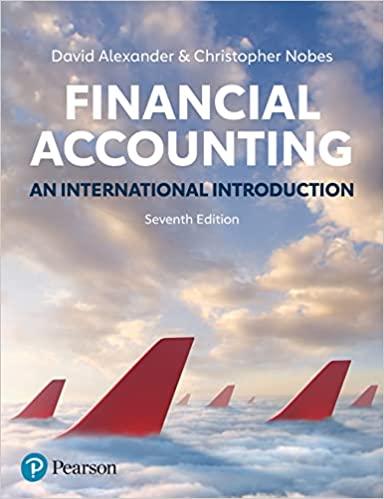Question
Pretend you are an investment advisor with a major brokerage firm, you are in early February 2010 and need to examine Wal Mart Stores stock
Pretend you are an investment advisor with a major brokerage firm, you are in early February 2010 and need to examine Wal Mart Stores stock and its valuation to either recommend or not the stock to any of your new or existing clients.
Use an intrinsic value approach to price the shares and to then compare the resulting price with the price at which the stock was traded in the market.
Please focus on valuation concepts learned in class: Dividend discount model, capital asset pricing model (CAPM) and Price/Earnings multiples.
Wal Mart became publicly traded firm in 1970 with an initial stock price of $16.50 per share and subsequently, in March 1974, declared its first cash dividend of $0.05 per share (after two for one stock splits). IT had undergone 11 two for one stock splits, and thus, an original lot of 100 WM shares had grown to 204,800 shares after the most recent split in April 1999.
Analysts generally believed that WM would continue to be successful in consistently increasing profits. Some analysts forecasted annual earnings growth of 6.00% for the next five years, while other more optimistic forecasted annual growth of 10.4% for the next five years.
According to Bloomberg, WM shares were ranked as buys in the coming six to 12 months by 20 analysts. holds by 7 and sells by none. Analysts consensus projected WM target price was $60.5 per share, relative to a recent closing price of $53.48 per share.
Over the 2010 fiscal year, WM shareholders had generated a total return (including dividends) of 9.69% and the consensus stock price forecast ranking (as measured by buys, holds, sells) was above that of the overall market. WM 52-week high stock price was $55.01 per share and the 52week low was $46.42 per share.
Anticipated dividend growth (g) can be estimated based on:
Historical dividend growth assumed to continue in a perpetual fashion or based on future dividend growth based on recent estimates of analysts.
Consensus annual WM dividend for 2011 was $1.21 and one respected analyst had estimated the expected constant dividend growth (in perpetuity) at approximately 5%.
Analysts had estimated current earnings growth for WM at 10.4% and the current payout of dividends was $1.09 per share on recent earnings of $3.72 per share. Payout at maturity expected to be 45%.
Bloombergs Beta estimate of 0.66. Historical US market risk premium was estimated to be 5.05%. Long term government bonds 3.68%.
Analysts were expecting WM growth to come primarily from two sources. One was a healthier customer traffic versus most other US retailers. Analysts were anticipating annual earnings growth of approximately 10.40% over the next five years, growth rate, slightly more than annual growth in earnings of approximately 8.75% over the past five years.
By comparison, industry growth over the past 5 years had been approximately 5.85% but had been projected to be 14.62% over the next five years. The estimated industry P/E multiple based on projected 2010 calendar year earnings was 14.23 times.
Based on all the information provided, calculate the price of WM stock, and see if that would match the current price. If it was higher or lower, would it imply that the stock was a good buy or not, or would you need to reconsider the assumptions and model inputs?
Based on your calculations, should the stock be purchased at its current price $53.48?
Step by Step Solution
There are 3 Steps involved in it
Step: 1

Get Instant Access to Expert-Tailored Solutions
See step-by-step solutions with expert insights and AI powered tools for academic success
Step: 2

Step: 3

Ace Your Homework with AI
Get the answers you need in no time with our AI-driven, step-by-step assistance
Get Started


